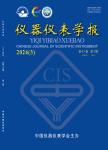Correlation between MEG and BOLD fMRI signals induced by visual flicker stimuli
Correlation between MEG and BOLD fMRI signals induced by visual flicker stimuli作者机构:Department of Radiology Harvard Medical School Boston Massachusetts USA MEG Core Facility National Institute of Mental Health National Institutes of Health Bethesda Maryland USA Advanced MRI Section LFMI National Institute of Neurological Disorders and Stroke National Institutes of Health Bethesda Maryland USA
出 版 物:《仪器仪表学报》 (Chinese Journal of Scientific Instrument)
年 卷 期:2007年第28卷第4期
页 面:577-582页
核心收录:
学科分类:0810[工学-信息与通信工程] 08[工学] 0804[工学-仪器科学与技术] 0703[理学-化学] 081001[工学-通信与信息系统]
摘 要:The goal of this work was to investigate how the MEG signal amplitude correlates with that of BOLD fMRI. To investigate the correlation between fMRI and macroscopic electrical activity, BOLD fMRI and MEG was performed on the same subjects (n=5). A visual flicker stimulus of varying temporal frequency was used to elicit neural responses in early visual areas. A strong similarity was observed in frequency tuning curves between both modalities. Although, averaged over subjects, the BOLD tuning curve was somewhat broader than MEG, both BOLD and MEG had maxima at a flicker frequency of 10 Hz. Also, we measured the first and second harmonic components as the stimuli frequency by MEG. In the low stimuli frequency (less than 6 Hz), the second harmonic has comparable amplitude with the first harmonic, which implies that neural frequency response is nonlinear and has more nonlinear components in low frequency than in high frequency.



